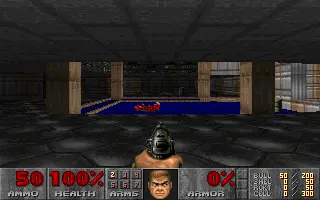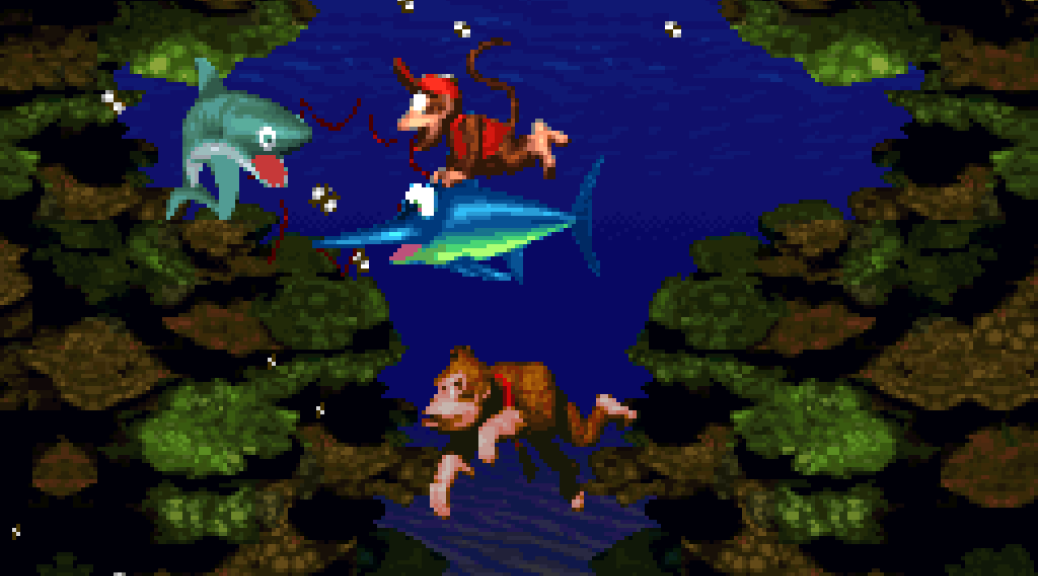Gotta say, for a 90s console game on 16-bit technology, it looked phenomenal. Both this and Super Mario RPG.
Rare used top of the line super computers for the CGI graphics, SGI machines. The same kinda computers used in the making of Jurassic Park, iirc.
I might be mistaken, but didn’t they use the SNES Super FX chip in this game? I know it was used in Star Fox.
Pre-rendered graphics.
They rendered each sprite from a 3D model on a supercomputer, then copied that image to the SNES ROM. All the SNES did was load the readymade images as needed. No SuperFX chip, but the original DKC carts had more ROM storage than any SNES game before it.
And then Rare claimed they were continuing the memory-maxing shenanigans with DK 64 requiring the Expansion Pack to play, but it was really only to fix one bug that would be hard to run into but would break the game without it. The Expansion Pack does very little to nothing for the game otherwise. According to some former Rare devs they could’ve fixed the bug without needing the Expansion Pack but they decided to require it anyway.
That ended up being a myth. It really does use that extra RAM. https://www.nintendolife.com/news/2019/11/feature_donkey_kong_64_devs_on_bugs_boxing_and_20_years_of_the_dk_rap
Nah, it’d have been overkill for sprites. The sprites were based on models built using insanely expensive work stations, digitized into 2D sprites to fit on a SNES cart.
They didn’t.

The actual game didn’t look like this. But it did look damn good for its time. I remember being absolutely amazed.
Though I believe they used the actual game models for this render, it’s just a higher resolution than the ones they use in game.
Yes – and it’s a huge difference. Lots of jaggies on the original.
Mind you, they didn’t resolve as well considering CRTs.
Donkey Kong Country looked like crap even when it was new. It had novelty going for it (in its graphical style; its gameplay would’ve been dated half a decade earlier) but nothing else.
I’ve never heard anyone make these claims about donkey Kong country before. I remember it being highly praised for innovative gameplay and impressive graphics, especially for it’s generation.
Counterpoint, 1994 also gave us this graphical masterpiece

That’s absurdly high resolution for 1994 - it should be at 320×200, although with the “slightly rectangular” pixels that you get in DOS.
I think some of the magic of Doom gets lost in higher resolutions. The odd badly-aliased pixel gives the impression of glinting light, which it obviously does not have, and some of the mysteries of the enemies is lost, since normally they’d just be a few pixels unless you’re dangerously close to them. Gives the impression that it’s more animated than it is, since it would always be shifting. Modern ports will let you mouselook and things as well, which makes it crazy fast; not that you were exactly slow at turning around, back in the day, but you did need to play it in a more considered way.

That’s a good point: it’s not a fully authentic experience unless it’s window-boxed on a 15" 640x480 CRT, LOL.
15 inches would’ve been a big, luxurious monitor back then.
Minor thing - DOS games didn’t always necessarily use non-square pixels. Many did, but some (Jazz Jackrabbit springs to mind) did not. It was down to the fact that if you displayed a 320x200 image, the CRT would stretch it out to 4:3, giving you slightly taller pixels.
I read a really good blog post about it years ago, but I can’t seem to find it right now.
Tbh I took the screenshot using a modern device and doom retro (the source port)
I have amazing memories of that game. It’s something about being a kid that makes games feel so exciting. That goes away later so just enjoy the hell of it while you are young. :)
I find I enjoy Doom more now than I did when I was a kid. Back then I paid way more attention to the things the engine could and couldn’t do, but these days I’m able to appreciate it just for being fun.
I had a VHS tape mailed to me that had a preview of the game. Gameplay, graphics, and it even came in a special jungle leaf type VHS case. I think it was from my Nintendo power subscription, but I don’t know If I still had it during N64.
Horny fact: I used my old DK tape to record porn from the spice channel when I was able to get the image to unscramble.
Well, the game looked close, but not like that
It wasn’t even close, come on
Sorry, you’re right. The graphics looked close. The game didn’t look like this.
The spritework was incredible, and the backgrounds looked great, but there was absolutely no way to arrange the graphics like this on the SNES.
Dehance

Best graphics in 1994 on a technical level would probably be something like Virtua Fighter 2. But almost all early polygon games have aged like ass, unlike sprite-based ones.
Not sure I’d call that best on a technical level. It was doing something different: projecting triangles from 3d space to 2d space in real-time.
Donkey Kong country also did that but just not in real time. It was 3d graphics but pre-rendered and used as sprites. The rendering process would have been at least as technical.
Mortal Kombat was also around the same time and used sprites that were based on live action captures and involved highly technical stuff in a different direction.
Though if I had to guess, Doom was probably the most technical at the time, since it did 3d rendering in real time without relying on any 3d-specific hardware.
Iirc the 3dfx chip in some snes games handled that for games like starfox and the PlayStation had a hardware 3d renderer pipeline. Neither were particularly powerful (which is why early 3d stuff looked like cyber trucks, because polygon count needed to be kept low to hit frame deadlines), but they did offload that from the CPU.
For Doom, it was all handled on the CPU, which is why it can run on pretty much anything with a CPU and a display. Carmack figured out a lot of cool optimization tricks, like a fast square root approximation, to make it possible.
Descent in '95 was the technical marvel of the era for me, giving you full 3 axis 3d movement. I actually got the game to pick on a buddy of mine who tried the demo & literally threw up from motion sickness.
I always thought it was cool when you came into a room, enemies would be oriented differently than expected and you’d think “Wait, that’s supposed to be ‘down’?”
Lol. Made me wonder why the ships on sttng were always oriented upwards relative to each other.
Yeah, it’s one of those weird things that you don’t think about until someone points it out and then it bothers you…
There was a Sci Fi story I read that was based on a space station where the people who had been there awhile said that you can always spot the newbies 'cause they always line up like magnetic poles.
That’s hilarious. I have asked, with little success, how intergalactic or deep space starships navigate, given that the entire frame of reference is based on moving objects. Where is ‘up’?, and how would I say ‘meet me here’?
Doom was kinda 2.5d, not 3. They swapped out 2.5 d levels when you entered an area where you supposedly overlapped the map in the vertical axis. Other games that came out around the same time include worlfenstein 3d (also 2.5d, plain floor iirc), ultima underworld (not full screen) and system shock (full 3d, but always oriented to the user, with feet on the ground). Only descent went full 3d, but was disorienting to some users. Dooms tour de force was the optimization and the fps/ immersion it achieved, and we have carmack and his work on raycasting to thank for that, on (you stated) non accelerated hardware.
The fast square root didn’t come along until Quake 3.
Also made on super expensive computers. That cost around $25k a piece.
They still elite ngl
My hot take: yes, the Donkey Kong Country graphics looked very impressive at the time, as a technological feat that gave a 3D-rendered appearance on a console not capable of 3D rendering*.
But that doesn’t mean they were actually good.
Nowadays, I think it’s pretty well accepted that rendering your 3D model into sprites is the quick/lazy way to do it, and generally produces inferior results to creating your pixel art by hand to get things like the dithering and appearance after CRT blur is applied just right. Praising these sprites for being 3D-rendered is looking at them a bit with rose-tinted glasses.
More importantly, while Donkey Kong Country may have looked pretty at first glance, IMO it didn’t play as well as a good pixel art platformer like Super Mario World. A big part of the reason for that was that the imprecision of the sprites (leaving the edges at whatever pixel the floating-point-based 3D renderer happened to round them to, as well as in some cases obscuring those edges in shadow) made it harder to tell exactly where the platforms ended and where the character was in relation to them.
(* other than flat-shaded triangles with a SuperFX chip, which is not even close to the complexity of the DKC renders)
Now draw it with like 10% of the polygons. But of course, it’s still peak visuals today. The artwork, the vibe.
More like draw it with 0 polygons. The SNES used pixel sprites.
Ah, thought it was looking at N64 art 😊 But 1994 is a bit too soon for that.
Those are (I assume) the actual 3D models they used to make Donkey Kong Country, but of course they rendered them because the game itself was 2D. That trick looked pretty impressive for the time, kinda “I can’t believe it’s not 3D”.
If you want a much later, much less impressive result of such a technique, look at Fire Emblem : Shadow Dragon on the DS. They clearly did unit art with rendered 3D animated models, slightly retouched. They mostly look dirty and, in a very uncanny valley way, the animations look weird, too fluid.
Pixel sprites made in 3D software with polygons.
I think there’s something charming about like Rez graphics in games. I don’t personally need photorealism.












